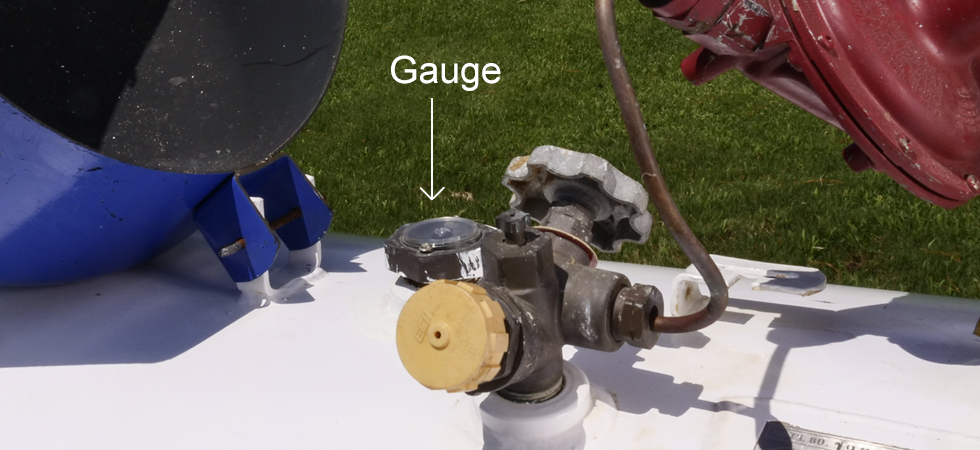Reading a Tank Gauge
Propane tanks are equipped with a gauge, located under the domed lid on top of the tank, with percentages indicating the amount of fuel in the tank. When reading the gauge, the number one key is to remember that the gauge will only read up to about 80% capacity, never 100%, even after a fill-up. This is a preventative safety measure, considered the 80% rule in the propane industry, against the fluctuations inside the tank.
Propane is stored as a liquid (liquid petroleum gas - LPG), which changes to gas before it is dispersed. Like a liquid, propane expands when its temperature rises. But, it expands much quicker and at a higher volume, almost 17 times the volume of water, over the same temperature increase. Therefore, extra space is needed in the tank to accommodate the extra pressure build up inside. The amount of gas doesn’t change during expansion/contraction just the density. Because of this expansion due to heat, propane tanks should never be painted a dark color as they absorb and retain heat.
When reading your tank gauge, it’s common to notice fluctuations in percentages during quick temperature swings – going from a hot day to a cool night. If your tank happens to empty, you must have an inspection performed by qualified professional before turning gas on again. To read your tank gauge:
- Locate your propane tank
- Raise the hinged dome lid on top of the tank
- Identify the gauge and read the percentage indicated by the needle
- Remember that if your gauge reads 80%, your tank is full and if it’s 40% your tank is half full
- When the indicator reads 25% or below, make sure to call Jackson Energy Authority Progas for a propane delivery

